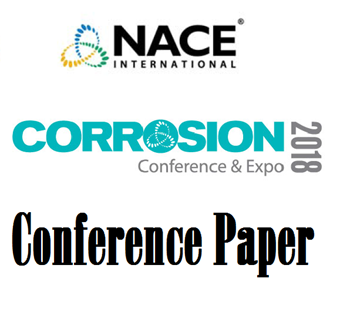Search
Chemical Inhibitors
View as
Sort by
Display
per page
51317-9586- Polymer and Nanomaterial Based Inhibitors: Stimuli-Responsive
Product Number:
51317-9586-SG
ISBN:
9586 2017 CP
Publication Date:
2017
$20.00
51317--9635-Chemical and Electrical Stability of Reference Electrodes in Sand Bed Dosed with Volatile Corrosion
Product Number:
51317--9635-SG
ISBN:
9635 2017 CP
Publication Date:
2017
$20.00
51317--9712-Novel Synthesis Characterization and Testing of Vegetable Oil Derived Corrosion Inhibitors
Product Number:
51317--9712-SG
ISBN:
9712 2017 CP
Publication Date:
2017
$20.00
51317--9719-New Yellow Metal Corrosion Inhibitors Targeting Surface Chemistry of Industrial Systems
Product Number:
51317--9719-SG
ISBN:
9719 2017 CP
Publication Date:
2017
$20.00
51317--9721-Use of Micelle Detection for Corrosion Inhibitor Screening
Product Number:
51317--9721-SG
ISBN:
9721 2017 CP
Publication Date:
2017
$20.00
51317--9780-Development of Test Methods and Factors for Evaluation of Oilfield Corrosion Inhibitors at High Temp
Product Number:
51317--9780-SG
ISBN:
9780 2017 CP
Publication Date:
2017
$20.00
51318-11030- A study on the Effect of Volatile Corrosion Inhibitors on Impressed Current Cathodic Protection
Product Number:
51318-11030-SG
Publication Date:
2018
$20.00
51318-11121-Chloride-induced corrosion inhibition by binary mixtures in reinforced concrete structures
Product Number:
51318-11121-SG
Publication Date:
2018
$20.00
51318-11180- A Corrosion Inhibition Study of Carbon Steel in a 0.7 MWe Pilot CO2 Capture Process
Product Number:
51318-11180-SG
Publication Date:
2018
$20.00
51318-11189-Corrosion Protection of Out-of-Service Pipelines
Product Number:
51318-11189-SG
Publication Date:
2018
$20.00
51318-11195-Criteria for Protective Film Growth on Carbon Steel Rebar in a Carbonation Process
Product Number:
51318-11195-SG
Publication Date:
2018
$20.00
51318-11262- Effectiveness Testing on Vapor Phase Corrosion Inhibitors Using Rotating Cage Autoclave and Electrochemical impedance Spectroscopy Methods
Product Number:
51318-11262-SG
Publication Date:
2018
$20.00












